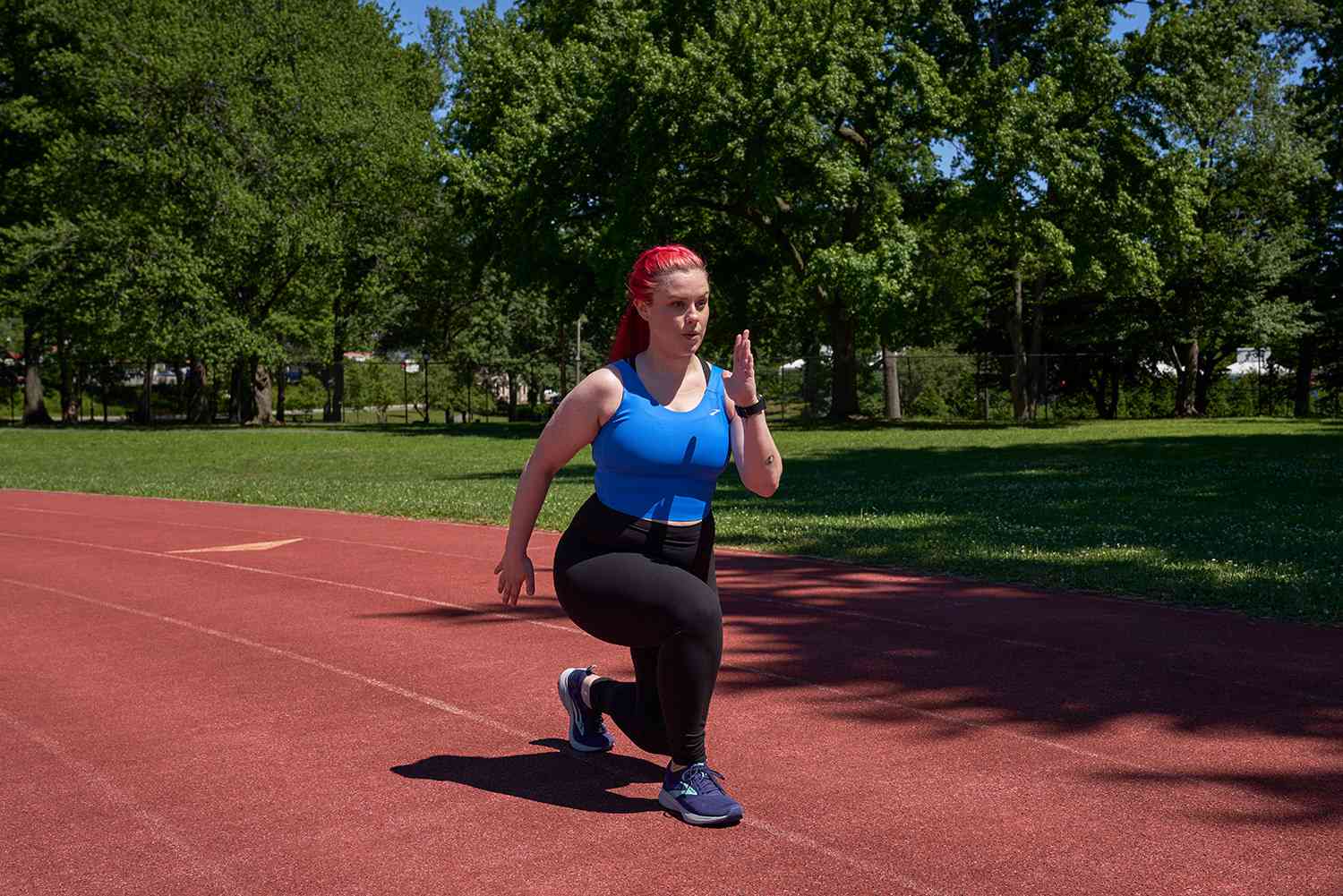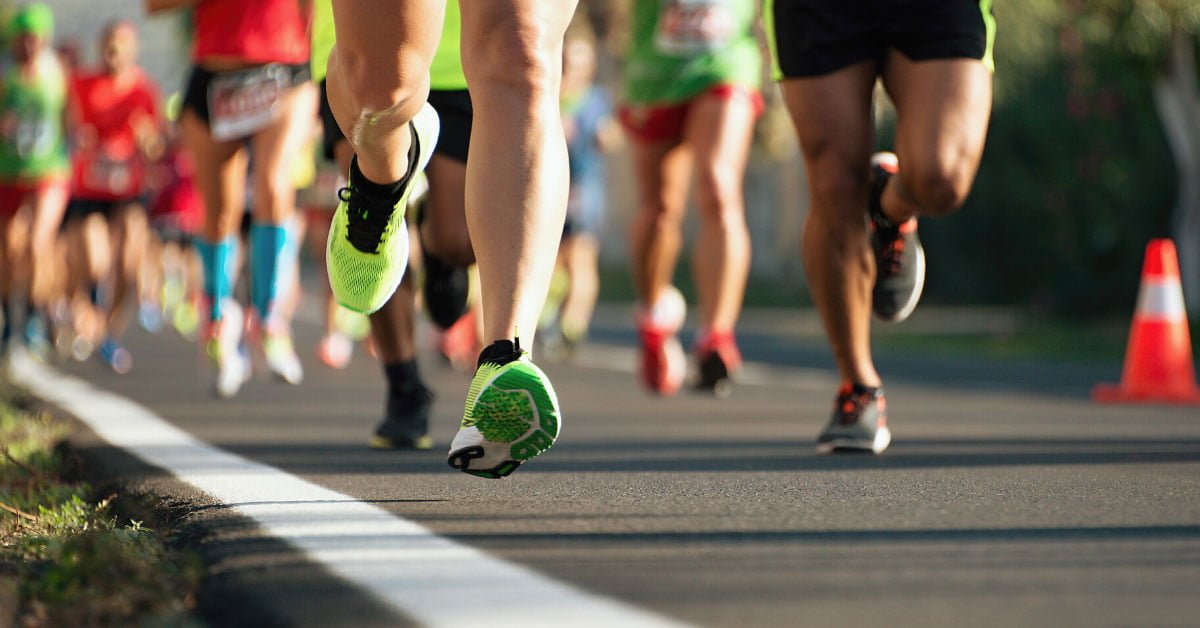Home>Misc>Featured>What Is Used As Energy In Long Distance Running


Featured
What Is Used As Energy In Long Distance Running
Modified: August 21, 2023
Discover the featured energy sources for long distance running and optimize your performance with the right fuel. Learn what fuels your body needs to endure those marathon distances.
Introduction
Welcome to the world of long distance running, where endurance and stamina are put to the ultimate test. Whether you are a seasoned marathoner or a newbie training for your first half marathon, understanding the energy requirements for long distance running is essential for success.
Long distance running requires a combination of physical fitness, mental focus, and proper fueling strategies. During these extended periods of physical exertion, the body relies on various energy sources to sustain the effort.
In this article, we will explore the different energy sources utilized in long distance running, including carbohydrates, fats, protein, hydration, electrolytes, as well as pre-run and post-run fueling strategies. By understanding how the body fuels itself during long distance running, you will be better equipped to optimize your energy levels and enhance your performance on the road.
So, lace up your running shoes and let’s dive into the fascinating world of energy in long distance running.
Carbohydrates as the primary energy source
When it comes to long distance running, carbohydrates are the body’s go-to source of energy. The body breaks down carbohydrates into glucose, which is then transported to the muscles and used as fuel. This process is known as glycolysis.
Carbohydrates are stored in the muscles and liver as glycogen, which serves as a readily available energy source during exercise. However, the body’s glycogen stores are limited and can become depleted after approximately 90 minutes of continuous running. This is why it’s crucial to consume carbohydrates both before and during long distance runs to maintain optimal energy levels.
Complex carbohydrates, such as whole grains, fruits, and vegetables, are ideal choices for long distance runners. These provide a gradual release of glucose into the bloodstream, ensuring a steady supply of energy throughout the run. On the other hand, simple sugars, found in sweets and sugary drinks, can provide a quick energy boost but may lead to a subsequent crash.
Experts recommend consuming a carbohydrate-rich meal a few hours before a long distance run to maximize glycogen stores. This can include foods like whole grain pasta, brown rice, oatmeal, or a combination of protein and carbohydrates like a banana with peanut butter. It’s important to experiment with different meal options during training to find what works best for your body.
During the run, consuming easily digestible carbohydrates in the form of energy gels, sports drinks, or energy bars can help maintain energy levels. These products typically contain a mix of simple and complex carbohydrates, providing an immediate energy boost while also replenishing glycogen stores.
Keep in mind that individual carbohydrate needs may vary. Factors such as body weight, running pace, and duration of the run should be considered when determining carbohydrate intake during a long distance run.
The role of fats in long distance running
While carbohydrates are the primary energy source for long distance running, fats also play a significant role in fueling the body during prolonged exercise. Fats are stored in adipose tissue and can be broken down into fatty acids, which are then used for energy production.
During lower intensity or moderate-paced long distance runs, the body relies more on fat oxidation for energy. As the intensity of the run increases, carbohydrates become the preferred energy source due to their quicker conversion to usable fuel. However, even at higher intensities, fats still contribute a substantial amount of energy.
One of the advantages of utilizing fats as an energy source is that fat stores in the body are virtually unlimited compared to the limited glycogen stores. This means that even the leanest runners have an abundant supply of energy in the form of fat.
Training the body to efficiently utilize fats as an energy source can be beneficial for long distance runners. By incorporating low-intensity, longer duration runs into your training regimen, you can enhance your body’s ability to burn fat for fuel. This is known as aerobic training, which improves the efficiency of the cardiovascular system and the body’s ability to utilize fats for energy.
It’s important to note that while fats provide a significant energy source, they are metabolically slower to convert into fuel compared to carbohydrates. This is why during high-intensity runs or sprints, relying solely on fats may not provide the quick burst of energy needed for optimal performance. Instead, carbohydrates become the predominant fuel source during intense efforts.
Incorporating a balanced diet that includes healthy fats, such as avocados, nuts, seeds, and olive oil, is crucial for long distance runners. These fats provide essential fatty acids and contribute to overall energy stores in the body.
Understanding the role of fats in long distance running and optimizing their utilization through training and nutrition can help improve endurance and performance on the road.
Protein and its role in energy production
When it comes to energy production in long distance running, protein is often overlooked compared to carbohydrates and fats. While protein’s primary role is not to serve as an energy source, it does play a vital role in supporting the body’s energy needs during exercise.
Protein is made up of amino acids, which are essential for building and repairing tissues in the body. During long distance running, the repetitive impact and muscle contractions can lead to small muscle tears. Consuming adequate protein helps repair and rebuild these muscles, allowing for faster recovery and reducing the risk of injury.
Moreover, protein can serve as a secondary source of energy during long distance runs. When glycogen stores are depleted, the body may turn to protein to produce glucose through a process called gluconeogenesis. However, relying on protein for energy is not ideal as it may lead to the breakdown of muscle tissue. It’s important to ensure an adequate carbohydrate intake to prevent protein breakdown for energy purposes.
Another benefit of consuming protein during long distance running is its ability to regulate blood sugar levels. Protein slows down the digestion process, preventing rapid increases and decreases in blood sugar levels. This can help maintain stable energy levels throughout the run and prevent energy crashes.
While protein is essential for recovery and muscle repair, it should not be the primary focus in terms of energy intake during long distance running. Carbohydrates and fats should still make up the majority of the calorie intake to provide the necessary fuel for optimal performance.
Include a variety of protein sources in your diet, such as lean meats, poultry, fish, eggs, dairy products, legumes, and plant-based protein alternatives like tofu or tempeh. Aim for a balanced diet that incorporates carbohydrates, fats, and protein to meet the energy demands of long distance running while supporting overall health and recovery.
Hydration and its impact on energy levels
Staying properly hydrated is crucial for maintaining optimal energy levels during long distance running. Even mild dehydration can have a negative impact on performance and energy production.
During exercise, the body loses fluids through sweat, which must be replaced to prevent dehydration. When you are dehydrated, the volume of blood in your body decreases, making it harder for the heart to pump oxygen and nutrients to the working muscles. This can result in decreased energy levels and performance.
In addition to fluid loss, electrolytes, such as sodium, potassium, and magnesium, are also lost through sweat. These minerals are essential for various bodily functions, including muscle contractions, nerve impulses, and maintaining proper fluid balance.
Hydrating properly before, during, and after long distance runs is key to maintaining energy levels. Start by hydrating well in the hours leading up to your run. Aim to consume around 16-20 ounces of water or a sports drink with electrolytes a few hours before your run. This will ensure that you start your run properly hydrated.
During the run, drink water or a sports drink at regular intervals, especially if you’re running for longer than 60 minutes. Sip on fluids every 15-20 minutes to replenish what you’ve lost through sweat and maintain hydration.
It’s important to note that individual hydration needs vary based on factors such as body weight, sweat rate, and environmental conditions. Monitoring urine color can be a helpful indicator of hydration status. Aim for a pale yellow color, similar to the color of lemonade.
After your run, rehydrate by consuming fluids and electrolytes to replenish what you’ve lost. Water, sports drinks, or coconut water are all good options. Additionally, consuming foods with high water content, like fruits and vegetables, can contribute to hydration.
Proper hydration not only impacts energy levels but also helps regulate body temperature, supports cardiovascular function, and aids in nutrient absorption. Make hydration a priority in your long distance running routine to maximize energy and overall performance.
Electrolytes and their importance in energy maintenance
Electrolytes are minerals that carry an electric charge in the body and play a critical role in energy maintenance during long distance running. The main electrolytes involved in energy production are sodium, potassium, and magnesium.
During exercise, electrolytes are lost through sweat, and maintaining proper electrolyte balance is crucial for numerous bodily functions, including muscle contraction, nerve transmission, and maintaining fluid balance. Imbalances in electrolyte levels can lead to muscle cramps, fatigue, and decreased energy levels.
Sodium is the most important electrolyte for regulating fluid balance. It helps retain water in the body, preventing dehydration, and supports optimal muscle and nerve function. Consuming sodium during long distance running, either through sports drinks or electrolyte tablets, can help replenish what is lost through sweat and maintain proper hydration levels.
Potassium is another essential electrolyte involved in energy production and muscle function. It helps regulate the balance of fluids and supports nerve impulse transmission. Adequate potassium intake can help prevent muscle fatigue and cramping during long distance runs. Good sources of potassium include bananas, oranges, spinach, and avocados.
Magnesium plays a crucial role in energy metabolism and muscle function. It is involved in over 300 enzymatic reactions in the body, including the production of adenosine triphosphate (ATP), the primary energy molecule. Adequate magnesium levels can help optimize energy production and prevent muscle cramps. Foods rich in magnesium include nuts, seeds, spinach, and whole grains.
To ensure proper electrolyte balance during long distance running, it is important to replenish these minerals through diet and, if needed, through sports drinks or electrolyte supplements. Sports drinks contain a combination of electrolytes, including sodium, potassium, and sometimes magnesium, providing a convenient way to replenish these minerals during exercise.
It’s crucial to listen to your body and pay attention to signs of electrolyte imbalance. These signs may include muscle cramps, excessive fatigue, dizziness, or irregular heartbeats. If you experience these symptoms, it may be necessary to adjust your electrolyte intake and consult with a healthcare professional.
By maintaining a proper balance of electrolytes, you can support energy levels, prevent muscle cramps, and optimize overall performance during long distance running.
Pre-run fueling strategies for long distance running
Fueling your body appropriately before a long distance run is essential for maintaining optimal energy levels throughout the workout. Pre-run nutrition focuses on providing the necessary carbohydrates, fats, and fluids to support performance and prevent energy depletion. Here are some strategies to consider:
-
Timing: Ideally, consume a pre-run meal or snack about 2-3 hours before your run to allow for proper digestion. This timing allows your body to absorb and utilize the nutrients efficiently. However, if you prefer to eat closer to your run, choose easily digestible foods that won’t cause discomfort.
-
Carbohydrates: Ensure your pre-run meal includes complex carbohydrates to provide a steady source of energy. Opt for whole grains, fruits, vegetables, or other high-fiber carbohydrates. Avoid foods high in fat and fiber, as these can slow down digestion and cause discomfort during the run.
-
Protein: Although carbohydrates should be the focus of your pre-run meal, including a small amount of protein can help with muscle repair and recovery. Consider adding lean protein sources like yogurt, eggs, or lean meats as part of your pre-run meal.
-
Hydration: Start your run well-hydrated by consuming fluids leading up to your workout. Aim for around 16-20 ounces of water or a sports drink a few hours before your run. Sip on water or a sports drink up until the start of your run to ensure adequate hydration.
-
Personalization: Experiment with different pre-run meal options during your training to find what works best for your body. Pay attention to how different foods make you feel during your runs. Some runners may tolerate a larger meal, while others may prefer smaller, easily digestible snacks.
Keep in mind that individual preferences and tolerances vary when it comes to pre-run fueling. It is essential to listen to your body and find what works best for you. Some runners may prefer a light snack, such as a banana with nut butter or a small bowl of oatmeal, while others may need a more substantial meal, like a turkey sandwich with whole grain bread.
Lastly, avoid trying any new foods or beverages on race day or before a critical training run. Stick to familiar foods that you know your body tolerates well to minimize the risk of digestive issues during the run.
By following pre-run fueling strategies, you can ensure that your body has the necessary fuel and hydration to perform at its best during long distance running.
During-run fueling strategies for sustained energy
Long distance running requires sustained energy to keep you going strong throughout the entirety of your run. During the run, it’s essential to replenish carbohydrates and fluids to maintain optimal energy levels. Here are some strategies for fueling during your run:
-
Carbohydrate intake: During longer runs lasting more than 60 minutes, aim to consume carbohydrates to provide a continuous source of fuel. This can be achieved by consuming energy gels, sports drinks, or energy bars that contain a mix of simple and complex carbohydrates. These products are specifically designed to be easily digestible and provide quick energy.
-
Timing: Spread out your carbohydrate intake during your run to avoid stomach discomfort and ensure a steady supply of energy. Aim to consume carbohydrates every 30-45 minutes, depending on the intensity and duration of your run.
-
Hydration: Drink water or a sports drink at regular intervals during your run to stay hydrated. Hydration needs vary depending on factors such as sweat rate, weather conditions, and individual tolerance. Sip on fluids every 15-20 minutes to replenish what you’ve lost through sweat and maintain optimal hydration levels.
-
Electrolytes: When running for an extended period, especially in hot and humid conditions, it’s essential to replace electrolytes lost through sweat. Consider consuming sports drinks or electrolyte tablets that contain sodium, potassium, and magnesium to maintain proper electrolyte balance and prevent muscle cramps.
-
Practice: During training, experiment with different fueling options to find what works best for you. Not all products or strategies may agree with your digestive system, so it’s crucial to find options that provide sustained energy without causing gastric distress.
-
Listen to your body: Pay attention to how your body feels during your runs. If you start to feel fatigued or experience a drop in energy, it may be a sign that you need to fuel up. Don’t wait until you hit a wall or become severely depleted to refuel.
Remember, fueling during your run is as important as pre-run nutrition. Providing your body with a continuous source of carbohydrates and staying properly hydrated will help maintain energy levels, delay fatigue, and improve overall performance.
It’s important to note that everyone’s fueling needs during a run may vary. Experiment with different products, flavors, and timings to find what works best for you. Consult with a sports nutritionist or healthcare professional for personalized recommendations.
Recovery and post-run nutrition for energy restoration
Post-run nutrition plays a critical role in replenishing energy stores, aiding in muscle recovery, and facilitating overall recovery after long distance running. Proper nutrition following a run helps restore glycogen levels, repair damage from the workout, and prepare the body for future training. Here are some key points to consider:
-
Timing: Aim to consume a snack or meal within 30 minutes to an hour after your run. During this post-workout window, your body is more efficient at replenishing glycogen stores and repairing muscle tissues. Consuming nutrients during this time can help optimize recovery.
-
Carbohydrates: Focus on consuming carbohydrates after your run to replenish glycogen stores in the muscles. Choose high-quality carbohydrates such as whole grains, fruits, and starchy vegetables. These carbohydrates provide a steady release of glucose into the bloodstream and aid in recovery.
-
Protein: Protein is essential for muscle repair and recovery. Include a source of lean protein in your post-run nutrition, such as poultry, fish, eggs, dairy, legumes, or plant-based protein alternatives. Aim for around 15-25 grams of protein to promote muscle protein synthesis.
-
Fluids: Rehydrate your body after the run by consuming fluids like water, sports drinks, or coconut water. Replacing fluids lost through sweat is crucial for recovery and optimal bodily functions.
-
Electrolytes: Depending on the duration and intensity of your run, you may need to replenish electrolytes lost through sweat. Consider consuming electrolyte-rich foods or beverages to restore electrolyte balance and aid in recovery.
-
Anti-inflammatory foods: Include foods with anti-inflammatory properties in your post-run nutrition to help reduce inflammation and promote recovery. This can include foods like berries, leafy greens, nuts, and fatty fish rich in omega-3 fatty acids.
-
Rest and sleep: Remember that recovery involves more than just nutrition. Allow your body ample rest and prioritize quality sleep to aid in muscle repair and overall recovery.
Individual recovery needs may vary, so it’s important to pay attention to how your body responds to different foods and recovery strategies. Experiment with different post-run meals or snacks to find what works best for you in terms of energy restoration and muscle recovery.
Overall, post-run nutrition is an integral part of the training process. By providing your body with the necessary nutrients and fluids, you can optimize recovery, reduce muscle soreness, and prepare for future runs.
Alternative energy sources in long distance running
While carbohydrates and fats are the primary energy sources for long distance running, there are alternative energy sources that can be utilized by the body. These alternative sources become particularly important when glycogen stores are depleted or when exercise intensity exceeds the body’s ability to rely solely on carbohydrates and fats. Here are some alternative energy sources to consider:
-
Lactate: During high-intensity exercise, the body can convert glucose to lactate as a source of energy. Lactate can be used as fuel by the muscles and other organs. This process, known as lactate utilization, allows the body to continue generating energy even when glycogen stores are low.
-
Ketones: Ketones are a type of fuel produced by the liver when carbohydrate stores are limited, and the body turns to fat for energy. In a state of ketosis, the body can utilize ketones as an alternative source of energy. While ketones are more commonly associated with low-carb, high-fat diets, they can also be produced during prolonged periods of exercise.
-
Free fatty acids: Beyond stored fat, the body can break down free fatty acids from adipose tissue and skeletal muscles for energy. Free fatty acids are released into the bloodstream and transported to working muscles where they are oxidized for fuel. This is particularly important during longer, lower-intensity runs when the body relies more on fat metabolism.
-
Muscle glycogen: While glycogen stores in the liver and muscles are typically the body’s primary source of energy during exercise, muscle glycogen can also be broken down and utilized directly by the working muscles. This is advantageous as it bypasses the need for glycogen to be converted to glucose in the liver.
-
Amino acids: Protein breakdown can occur during long distance running, particularly when glycogen stores are depleted. The body can convert amino acids, derived from muscle protein breakdown, into glucose through a process known as gluconeogenesis. This glucose can then be used as fuel to sustain energy levels.
-
Intramuscular triglycerides: Within the muscle cells, there are stores of fat known as intramuscular triglycerides. These triglycerides can be broken down and used as fuel during endurance exercise, providing an additional source of energy when glycogen stores become depleted.
It’s worth noting that the reliance on these alternative energy sources depends on several factors, including the duration and intensity of the run, training adaptations, and individual genetics. The body’s ability to efficiently utilize these alternative sources can be improved through proper training, such as long, slow distance runs and nutritional strategies that support energy metabolism.
Understanding the different energy sources available to the body during long distance running can help athletes develop effective fueling strategies to optimize their performance and sustain energy levels throughout their runs.
Conclusion
In the world of long distance running, understanding energy sources and implementing proper fueling strategies is key to maximizing performance and maintaining optimal energy levels. Carbohydrates serve as the primary energy source, providing the body with readily available glucose for fuel. Fats, on the other hand, contribute to sustained energy during low-intensity exercise and support endurance. Protein plays a role in muscle repair and recovery, while hydration and electrolyte balance are essential for energy maintenance.
Pre-run fueling focuses on consuming carbohydrates a few hours before the run to ensure glycogen stores are adequately stocked. During the run, fueling with easily digestible carbohydrates and maintaining hydration and electrolyte balance is crucial to sustain energy levels. Post-run nutrition plays a critical role in replenishing glycogen stores and promoting muscle recovery through a combination of carbohydrates and protein.
While carbohydrates and fats are the primary energy sources, the body also utilizes alternative sources such as lactate, ketones, free fatty acids, muscle glycogen, amino acids, and intramuscular triglycerides. These alternative sources become important during longer runs or when glycogen stores become depleted.
Understanding the interplay of these energy sources and implementing proper fueling strategies can help long distance runners perform at their best and avoid hitting the dreaded wall. Each runner is unique, and it is important to experiment with different fueling options to find what works best for individual needs and preferences. Consulting with a sports nutritionist or healthcare professional can provide personalized guidance for optimizing energy production and performance.
So, lace up your running shoes, fuel your body properly, and embrace the incredible energy that long distance running provides. With the right nutrition, hydration, and knowledge of energy sources, you can go the distance and achieve your running goals.









